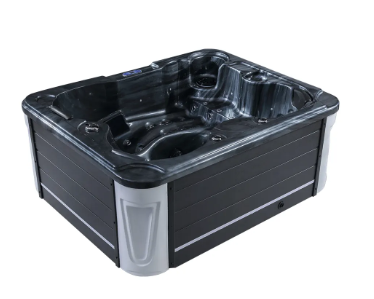عطل في التدفئة يؤدي إلى مياه باردة
معايرة وفحص العداد
تعد فحوصات терموستات منتظمة مهمة إذا أردنا أن تظل درجة حرارة ماء حوض الاسترخاء مناسبة. يقوم термоستات بضبط السخان بحيث يظل الماء دافئًا بما يكفي دون أن يصبح ساخنًا جدًا. عندما يتعطل терموستات، فعادة ما يكون ذلك بسبب تركيب خاطئ أو وجود مشكلة في الكهرباء التي تمر من خلاله. في بعض الأحيان يحاول الأشخاص إصلاح هذه المشكلات بأنفسهم، لكن بصراحة قد يكون من الضروري استخدام أدوات التشخيص المتقدمة لمعرفة ما يحدث بالفعل. يوصي معظم الخبراء بإجراء فحص وضبط دوري للтерموستات وفقًا للتوجيهات القياسية المعمول بها. إذا أُهملت هذه الفحوصات، فقد تؤدي الإعدادات غير الصحيحة إلى تقلبات كبيرة في درجة حرارة الماء، وهو أمر غير مرغوب فيه أبدًا عند محاولة الاسترخاء في الحوض بعد يوم طويل.
فحص وتبديل عنصر التدفئة
يساعد فحص عناصر التسخين بانتظام في الحفاظ على كفاءتها في الحفاظ على درجة حرارة الماء المناسبة. عند إجراء هذه الفحوصات، انتبه إلى أي أماكن تآكل، شقوق، أو علامات تآكل عامة، لأن كل هذه المشكلات تؤثر بشكل كبير على أداء السخان في نظام حوض الاستحمام الساخن. يجد معظم الأشخاص أن من المنطقي التخطيط لاستبدال هذه العناصر وفقًا لتكرار استخدامهم للحوض، ولكن لا أحد يرغب في مواجهة مواقف غير متوقعة، لذا يُنصح بأن يقوم شخص متخصص بفحص دقيق لهذه العناصر كل ستة أشهر تقريبًا. تدعم الأرقام هذه الممارسة أيضًا، إذ تشير الإحصائيات إلى أن هناك احتمالًا بنسبة 30 بالمائة بأن تكون أعطال السخانات ناتجة عن تلف في العنصر نفسه. لذا فإن الانتباه إلى العلامات التحذيرية المبكرة أمر بالغ الأهمية لتجنب فشل كامل في النظام لاحقًا.
موازنة كيمياء المياه لتحقيق تسخين مثالي
إن تحقيق التوازن الصحيح للكيمياء المائية يُحدث فرقاً كبيراً في أداء السخانات ويمنع مشاكل التآكل في تلك الحوضات الفاخرة التي نحبها كثيراً. يجب على الأشخاص التحقق أسبوعياً من مستويات الرقم الهيدروجيني (pH)، ومراجعة قراءات القلوية، وإجراء اختبار لصلابة الكالسيوم كذلك. بمجرد خروج هذه القيم عن النطاق الطبيعي، يجب إجراء التعديلات بسرعة للحفاظ على نطاق آمن. تشير بعض الدراسات إلى أن سوء توازن المياه يمكن أن يقلل من كفاءة التسخين بنسبة تصل إلى 20 بالمئة، مما يعني أن الإهمال في هذه الخطوة يؤدي إلى تكبد خسائر مالية على المدى الطويل. إن الحفاظ على توازن المواد الكيميائية بشكل صحيح لا يساعد فقط في تحسين أداء السخانات، بل يحمي المعدات باهظة الثمن من الصدأ والأضرار الأخرى الناتجة عن بقاء المياه غير المعالجة دون معالجة. تلك الفحوصات الدورية والتعديلات ليست مجرد صيانة روتينية، بل هي ما يحافظ على تشغيل الحوضات بسلاسة ومنع الأعطال المفاجئة التي تفسد أوقات الاسترخاء.
أداء الفوهات الضعيف أو المسدود
إزالة الأوساخ من فوهات النفاثات
يعتمد الحفاظ على عمل تلك الدشات بشكل صحيح في حوض الاستحمام الساخن حقًا على تنظيف الفوهات بانتظام. عندما تتراكم الأوساخ والأتربة داخلها، فإنها تمنع تدفق المياه بشكل صحيح عبر النظام. يجد معظم الناس أن استخدام شيء مثل فرشاة أسنان قديمة أو واحدة من تلك أدوات تنظيف الأنابيب المرنة يعمل بشكل جيد في التخلص من الانسدادات دون كسر أي شيء. لقد رأينا بيانات توضح أن نحو نصف جميع مشاكل دشات أحواض المياه الساخنة تعود إلى هذا النوع من التراكم. ولهذا السبب، يضع أصحاب الحوضات الساخنة الذكية تنظيف الفوهات كجزء من روتين الصيانة العادي لديهم. القيام بذلك يحافظ على ضغط الماء القوي حيث يكون الأكثر أهمية، ويُساعد في تجنب الإصلاحات المكلفة في المستقبل عندما تبدأ القطع في الفشل مبكرًا بسبب انسداد الدشات.
صيانة دورية للفلاتر واستبدالها
إن الحفاظ على نظافة مرشحات السبا أو استبدالها عند الحاجة يُحدث فرقًا كبيرًا في كفاءة تدفق المياه من خلال الفوهات. وعادةً ما يجد الأشخاص أنهم بحاجة إلى تنظيف المرشحات جيدًا مرة كل أسبوع إلى مرة كل شهر، اعتمادًا على مدى استخدام السبا. كما يُقدم المصنع عادةً توصيات حول توقيت استبدال المرشحات، لذا فإن اتباع هذه الإرشادات يساعد في الحفاظ على تشغيل النظام بسلاسة ومنع حدوث انسدادات قد تؤثر على النظام بأكمله. عندما يهمل الأشخاص هذه الصيانة الأساسية، قد تنخفض دورة المياه أحيانًا بنسبة تصل إلى النصف، مما يفسد بالتأكيد تجربة الاسترخاء التي يبحث عنها الجميع. وتخصيص وقت بانتظام لأداء هذه المهام البسيطة يضمن للجميع الاستمتاع بجلسات السبا دون مواجهة أي مشاكل غير متوقعة في المستقبل.
حل مشكلة الانغلاق الهوائي في نظام السباكة
عندما يعلق الهواء في نظام السباكة، فإنه يتسبب في العديد من المشاكل مثل تدفق مائي أضعف وأصوات طرقعة غريبة تأتي من الأنابيب. لا يدرك معظم الناس أن هذه علامات على وجود قفل هوائي حتى تبدأ ساونتهم أو حوض الاسترخاء الخاص بهم بالتعطل. إذا لاحظوا انخفاض ضغط الماء أو سمعوا تلك الأصوات المزعجة من فقاعات، فمن المرجح وجود هواء عالق في مكان ما داخل الأنابيب. الأخبار الجيدة هي أن إصلاح هذه المشكلة ليس معقدًا للغاية. يكمن الحل عادة في التخلص من الهواء الزائد عبر صمامات أو باستخدام مكنسة كهربائية تعمل وهي مبللة، مما يعيد تدفق الماء بسلاسة عبر النظام. يوصي العديد من الفنيين ذوي الخبرة بإجراء فحوصات دورية للتحقق من وجود قفل هوائي مرة كل شهر أو ما شابه، فقط للبقاء مسبقًا على أي مشاكل محتملة. في النهاية، لا أحد يريد أن يُقطع عليه وقت الاسترخاء بسبب مشاكل في السباكة عندما يحاول التخلص من إرهاق يوم طويل.
فشل المضخة وأصوات التشغيل
تشخيص مشاكل محرك المضخة
معرفة متى يكون هناك خلل في محرك المضخة تُحدث فرقاً كبيراً في الحفاظ على تشغيل الجاكوزي بسلاسة. انتبه جيداً للأصوات الغريبة الصادرة من الوحدة. عادةً ما تشير الأصوات الخشنة إلى وجود مشكلة، بينما قد يدل التردد المستمر على ارتفاع درجة الحرارة أو مشاكل كهربائية. اكتشاف هذه التحذيرات مبكراً يسمح للمالكين بإصلاح المشكلات الصغيرة قبل أن تتحول إلى مشكلات كبيرة. لا يدرك معظم الناس كم يمكن أن يكون جهاز قياس متعدد الوظائف بسيط مفيداً. اختبار الاتصال الكهربائي والتحقق من تدفق الكهرباء بشكل صحيح عبر النظام يعطي صورة أوضح عما يحدث داخل المحرك. وفقاً للمهنيين الفنيين الذين يعملون على صيانة الجاكوزي يومياً، يمكن تجنب ربع أعطال المضخات تقريباً من خلال إجراء فحوصات بسيطة وصيانة دورية. ولذلك يفضل أصحاب الجاكوزي الذكاء جدولة مواعيد الصيانة بدلاً من الانتظار حتى يتعطل شيء ما تماماً.
معالجة انسدادات المروحة
عندما تسد المراوح، فإنها تؤثر بشكل كبير على تدفق المياه في نظام السبا بالكامل، ولهذا السبب فإن فحصها بانتظام أمر منطقي. في معظم الأحيان، تنتهي خصلات الشعر وفتات الأوساخ من منطقة المسبح بسد تلك الأجزاء الدوارة من الداخل. التخلص من هذه الرواسب عن طريق التنظيف الجيد يساعد في تجنب المشاكل الكبيرة في المستقبل عندما تبدأ المضخات بالعطل. تشير الدراسات إلى أن الاهتمام بهذه الانسدادات قبل أن تتفاقم يقلل حوالي 15٪ من مشاكل المضخات في أجهزة السبا. الفحوصات والتنظيف المنتظم يحافظان على تشغيل النظام بسلاسة، بحيث لا يضطر الضيوف للتعامل مع مياه دافئة فقط أو ضعف تدفق المياه أثناء الاسترخاء.
윤활 الاجزاء المتحركة لتقليل الضوضاء
يعني التشغيل الأهدأ مستخدمين أكثر سعادة، لذا فإن الحفاظ على الأجزاء المتحركة في المضخات مُزيتة بشكل جيد يُحدث فرقاً كبيراً. عندما يتم الالتزام بما يوصي به المصنّع فيما يتعلق بالزيوت، تعمل الأشياء بشكل أفضل معاً. تمنع المواد المناسبة حدوث الأعطال في المستقبل وتقلل من التآكل مع مرور الوقت. تُظهر بعض الدراسات بالفعل أن التزييت الصحيح يمكن أن يقلل مستويات الضجيج بنسبة تصل إلى النصف، مما يحوّل جو السبا إلى بيئة أكثر هدوءاً وراحة للضيوف. ولا تعتبر الصيانة الدورية مفيدة فقط للأداء اليومي. بل بالفعل تجعل تلك المكونات المكلفة تدوم لفترة أطول قبل الحاجة إلى استبدالها.
الأسئلة الشائعة
لماذا لا يحافظ تسخين السبا على درجة الحرارة المطلوبة؟
تشمل المشكلات الشائعة مشاكل تنظيم الثرموستات، أو عناصر التسخين التالفة، أو اختلال كيمياء المياه. يمكن أن تحل الفحص الدوري والصيانة غالبًا هذه المشكلات.
كيف يمكنني تحسين أداء النفاثات في حوض الاستحمام الخاص بي؟
تأكد من إزالة الحطام من فوهات النفاثة، وحافظ على تنظيف الفلاتر بانتظام، وتحقق من وجود انسداد هوائي في نظام السباكة.
ماذا يجب أن أفعل إذا كان مضخة السبا تصدر أصواتاً غير عادية؟
قم بتشخيص مشكلات محتملة في محرك المضخة وتحقق من انسدادات الشفرة الدوارة. يمكن أن يساعد تزييت الأجزاء المتحركة في تقليل الضوضاء.
كيف يمكنني حل أكواد الخطأ على لوحة تحكم السبا؟
يرجى الرجوع إلى الدليل الإرشادي أو موقع الشركة المصنعة على الإنترنت لتفسير الأكواد. يمكن إعادة تشغيل النظام لمسح الأخطاء البسيطة. إذا استمرت المشاكل، يُوصى بالاتصال بفني متخصص.
كيف أتعامل مع تكرار انقطاع الكسران ومشاكل GFCI في حوض الاسترخاء الخاص بي؟
افهم آليات GFCI وكيفية حل مشكلة الدوائر المحمّلة بشكل مفرط. يمكن أن يساعد إعادة تعيين المكونات الكهربائية بأمان في استعادة الخدمة.

